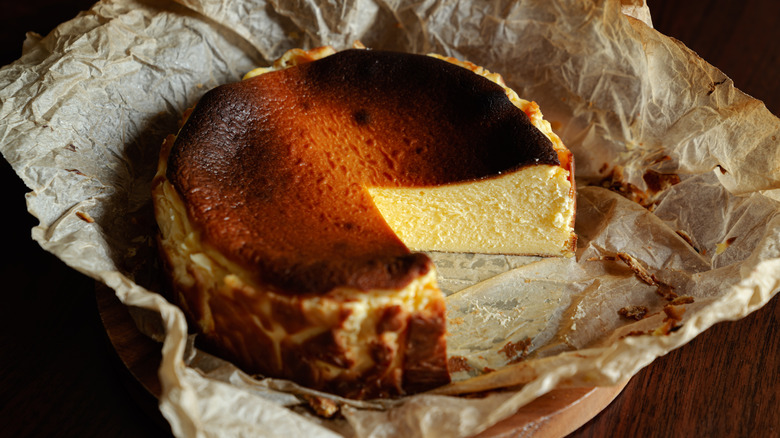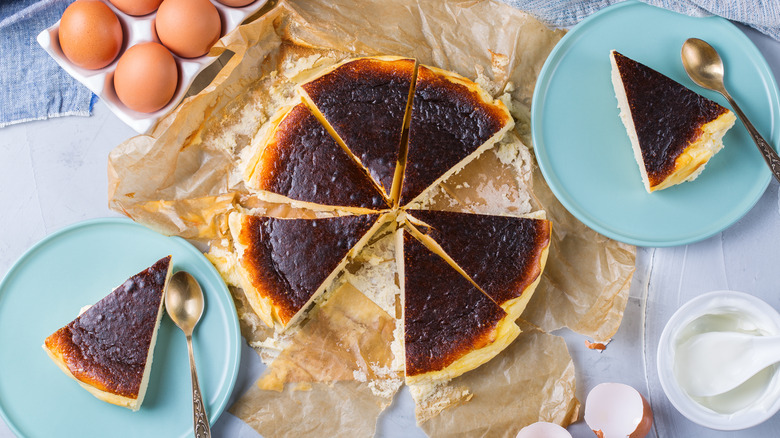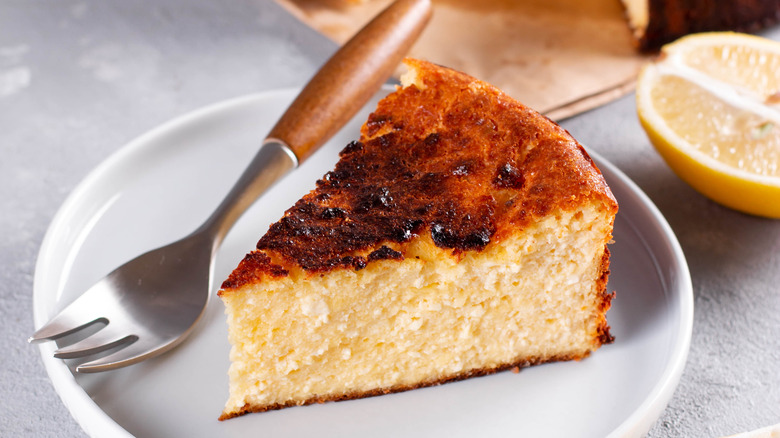Why Making Basque Cheesecake Will Have You Fighting Your Instincts
The year is 1990. The setting is Basque Country: the ancient region that spans northern Spain and southern France. Basque Country is home to one of the oldest ethnic groups (and languages) in Europe. It's a land that bridges Spanish and French culture, yet stands apart from both — exuding an identity that's rich, unique, and entirely its own. At the core of Basque culture? The region's unmatched gastronomy.
That's exactly why a chef named Santiago Rivera decides to embark on a culinary mission in the beautiful resort town of San Sebastián. He owns a small pintxos café called La Viña — one of many bar-slash-restaurants found throughout the city that serves tapas-like small plates for locals to explore their cuisine. This year, Rivera wants to mix things up and add to the café's menu. His goal: make a new cake every day.
This simple-yet-ambitious experiment in 1990 led to the creation of the unrivaled Basque cheesecake. A recipe that people all over the world are still going crazy, over thirty-plus years later, and a cheesecake that's unlike any other cheesecake you know. So what makes Basque cheesecake so different? For starters, it's burnt.
The secret to Basque cheesecake: watching it burn
When you make a Basque cheesecake, it will take everything in you to leave the cake in that hot oven and let this perfectly creamy, cheesy, sugary creation burn beyond recognition. But fighting those instincts is the key to making a true Basque cheesecake.
Most cheesecakes are baked using a water bath to ensure the cake doesn't dry out, crack, or overcook; the goal is generally to bake everything evenly without browning the top. This is typically done slowly, at a lower oven temperature (usually around 325°F to 350°F). But forget all that, because Basque cheesecake is pretty much the opposite.
To produce the quintessential torched, crispy, caramelized top, you need to bake the cheesecake on high heat (400°F to 450°F), with no water bath. Your goal is essentially to burn the outside and slightly undercook the inside — allowing for a more nutty, unique depth of flavor and a gooey, creamy interior that's more like a crème brûlée in texture than a cheesecake. It goes against everything you know about cheesecake, but somehow it all works beautifully.
How is Basque cheesecake different from other types of cheesecake?
A traditional or classic cheesecake, in its simplest form, is made of cream cheese, eggs, and sugar. It's a sweet, creamy, velvety cake that usually has a graham cracker or pastry crust. New York cheesecake also has a graham cracker crust, but it's made with a higher quantity of cream cheese and other additions like heavy cream or sour cream to make for a firm, smooth cake that's a richer, denser version of the classic.
Basque cheesecake is unlike either of these. Where your classic cheesecake is smooth, uniform, and light in color, Basque cheesecake is wrinkly, rough around the edges, and caramelized to a deep, dark, brown. Where New York cheesecake is ultra-dense, Basque cheesecake is gooey and airy — almost like a soufflé. And where the cheesecake you're used to is encased in a graham cracker crust, Basque cheesecake has no crust at all. Just like its place of origin, Basque cheesecake is entirely its own, and that's why we love it.


